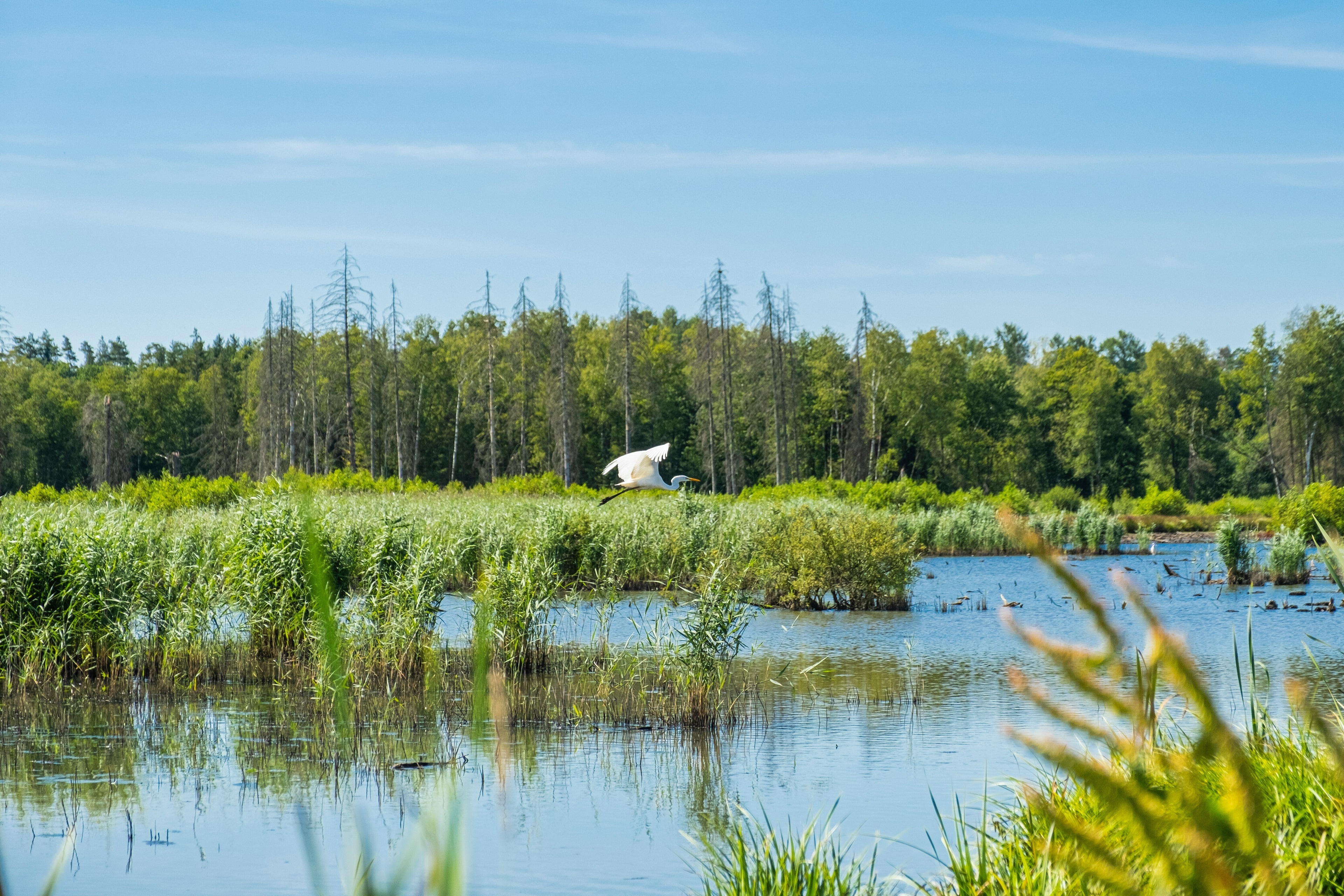Water for people or nature is a false choice. We need to think bigger to protect the world’s water

The Nile and the Sinai Peninsula photographed from space - looking at the world’s water problems from a higher perspective
Image: REUTERS/CSA/Col. Chris Hadfield
Stay up to date:
Fresh Water
When the first photo of Earth was taken from Apollo 17 in 1972, few could understand the cultural impact it would have. The Blue Marble, this singular sphere floating in deep space, was the perfect symbol for the fragility of our environment and mankind’s own existence.
Unfortunately, that existence has only grown more fragile. Since the 1990s human society has begun crossing planetary boundaries of great significance — environmental lines in the sand, if you will, from climate change to pollution — that represent a new regime in our relationship with the planet on which we depend.
Though often understood as “environmental” problems, these changes also pose a threat to development and human well-being, as food and water security grow more uncertain, and storms and other natural disasters grow more intense with climate change. It is increasingly clear that it is impossible to separate environmental concerns from global advancement and that addressing both will require us to augment our solutions.
This is perhaps most evident when it comes to water. Water is crucial for drinking, sanitation, food and energy production. It underpins all economic activity. But growing populations and limited water resources are increasingly in conflict, especially as the climate and hydrological cycles become further destabilized. This has had profound and disturbing effects: between 2013 and 2015, more than 22 million people were displaced by floods and almost 30 million by storms. Our fight with the hydrological cycle has produced as many internal displacements as conflicts have produced refugees.
The consequences are stark for the environment, too: in the past four decades, we’ve lost more than three-quarters of all species dependent on freshwater systems as these ecosystems have been degraded by development and river systems have been overdrawn for agriculture or broken by dams.
Faced with problems of this magnitude, it’s understandable that some communities look to our finite water resources and conclude that protecting ecosystems is less important than securing water for human use. But “water for people or water for nature” is a false choice — the solution to water security requires much, much bigger thinking.
If fact, when we shift our thinking from the community-scale to the system-scale, such as an entire river basin, it becomes clear that water security and ecological integrity are directly related. Clearcutting forests for agriculture, for example, is obviously an environmental concern, but it can also wreak havoc on water utility systems, as the resulting sediment and fertilizer runoff wash into municipal water sources. If we zoom out from the municipal level and look at the entire watershed, it becomes evident that investing in healthy forests to filter water and changing agricultural land use practices to reduce nutrient run-off are the most efficient ways to secure clean, reliable water flows.
The idea that solutions that make sense at an individual project level may need to be different when implemented at scale is not new in development literature. In the past 30 years, the global development community has acknowledged that the best answer is often not simply the sum of many small solutions; true impact at scale requires thinking differently.
Global health offers one example: health practitioners have gone from designing responses solely at a community level, to engaging in the delivery of medication to entire populations and facilitating the creation of national health systems.
Each of these steps has entailed a transformation of the model into which solutions have been introduced: from placing medical personnel in the community; delivering vaccines reliably through production, supply chains and disease management; to constructing institutions that can deliver a system of primary care. At each stage, the metrics of success have changed, shifting from actions to outcomes, and health practitioners have expanded their toolkits, moving beyond community levers to incorporate market and policy-change levers.
Likewise, the scale of the challenges we face in water security and other environmental issues dictates that solutions too must be approached from a certain scale. Sustainable water security is not complex simply because we don’t know the answer. It is complex because its delivery requires tackling problems at a scale that involves not just projects at a community level, but changes in policy and in the behavior of specific sectors, market actors and institutions.
River infrastructure offers an example. Hydropower is an important source of low-carbon electricity for many nations, but the development of hydropower and multipurpose dams is destroying river connectivity — a key ecological attribute — at an unprecedented rate. From a community point of view, the only question may be whether the benefits of a particular dam outweigh its costs, financial or otherwise. But the community view is incomplete: research from the Nature Conservancy demonstrates that the performance of a dam is connected to all the other dams on that river and to the functioning of the river itself.
In fact, when government and corporate actors work alongside scientists to site and develop dams in the context of a river’s ecology, it is possible to maintain greater connectivity throughout the river basin. This supports healthier fish stocks and the tens of millions of people who depend on them, while also limiting sedimentation and other risks to dams, reducing costs and increasing performance over time. It is in everyone’s interest to take river ecology into account when implementing new infrastructure, but this is only apparent if we approach the issue from the right scale.
Water markets offer another example of how different sectors can unlock scalable water solutions. More than 70% of the world’s freshwater resources are currently used for agriculture, but when cities and other water users are able to lease or purchase water rights from farmers, farmers have an incentive to improve their water efficiency. Furthermore, environmental groups can also purchase water to restore environmental flows, which in turn sustains the long-term health of the regional ecosystems that many farmers depend on.
Fifteen years after the Blue Marble photograph made it into our visual canon, Gro Harlem Brundtland, the former prime minister of Norway and first chair of the World Commission on Environment and Development, wrote these words in the commission’s Our Common Future report:
“The environment does not exist as a sphere separate from human actions, ambitions and needs, and attempts to defend it in isolation from human concerns have given the very word environment a connotation of naivety in some political circles. The word ‘development’ has also been narrowed by some into a very limited focus, along the lines of ‘what poor nations should do to become richer’ … But the ‘environment’ is where we all live; and ‘development’ is what we all do in attempting to improve our lot within that abode. The two are inseparable.”
Brundtland’s words represent a challenge, but also an opportunity that we must embrace today. Despite the magnitude of the challenges we face, the scientific evidence shows that we can protect the environment and advance development, if we consider the challenges and solutions at a much greater scale. If we are to deliver water security to meet the demands of our growing planet, we must heed her words now more than ever.
Don't miss any update on this topic
Create a free account and access your personalized content collection with our latest publications and analyses.
License and Republishing
World Economic Forum articles may be republished in accordance with the Creative Commons Attribution-NonCommercial-NoDerivatives 4.0 International Public License, and in accordance with our Terms of Use.
The views expressed in this article are those of the author alone and not the World Economic Forum.
Forum Stories newsletter
Bringing you weekly curated insights and analysis on the global issues that matter.
More on Nature and BiodiversitySee all
Mark Gough and Naoko Ishii
September 15, 2025
Shivin Kohli and Alessandro Valentini
September 10, 2025
Kate Whiting
September 9, 2025







